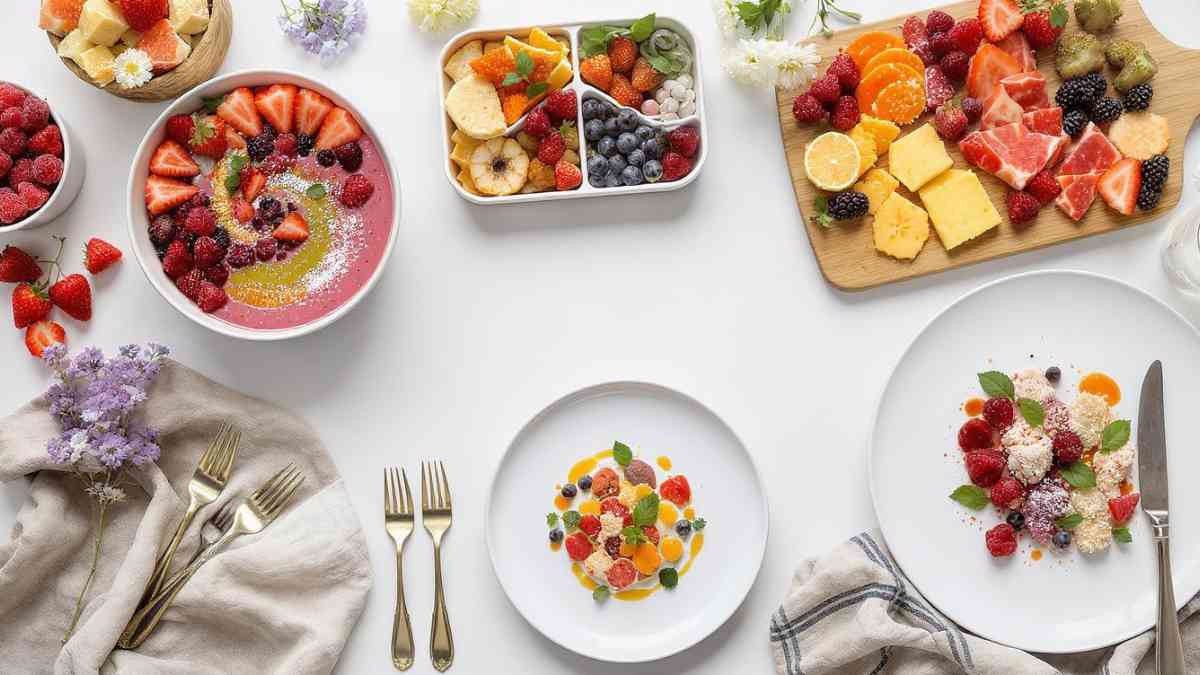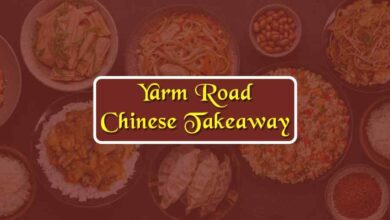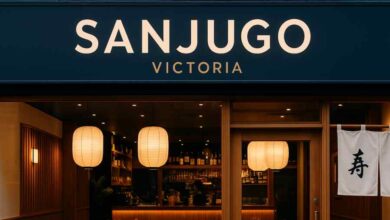Aesthetic Food: The Art of Making Meals That Look as Good as They Taste

In today’s digital age, where cameras eat first and presentation is everything, aesthetic food has taken center stage. It’s no longer enough for a dish to be delicious—people crave meals that dazzle the eyes before delighting the palate. From intricately plated fine dining to homemade smoothie bowls bursting with color, aesthetic food has evolved into a cultural movement that merges culinary art with visual storytelling.
The Evolution of Aesthetic Food
A Historical Perspective
The idea of beautifying food is far from new. From Renaissance banquets to Japanese kaiseki meals, cultures across the globe have long emphasized the visual appeal of their dishes. Historically, aesthetic food was reserved for royalty or religious ceremonies, where presentation signified status and respect.
Modern-Day Transformation
Today, the aesthetic appeal of food has transcended luxury dining. Thanks to platforms like Instagram, Pinterest, and TikTok, food presentation has become a global obsession. Aesthetic food now lives in everyday kitchens, with home cooks styling everything from toast to tea.
Why Aesthetic Food Matters
It Enhances the Dining Experience
When food looks appealing, we anticipate a better taste. Studies show that presentation significantly influences our perception of flavor, freshness, and quality. A well-plated meal engages multiple senses, making dining a fuller experience.
It Sparks Creativity
Creating aesthetic food is a creative outlet for many people. Whether it’s plating a vibrant salad or designing a character-themed bento box, the process involves imagination, design, and a personal touch that makes food both art and self-expression.
It Reflects Cultural Identity
Aesthetic food often tells a story. For example, traditional Indian thalis showcase regional variety and color. Japanese cuisine emphasizes seasonality and minimalism, while Mediterranean dishes highlight freshness and rustic beauty. Through visual cues, aesthetic food connects us to our roots and invites others to learn about our culture.
Elements That Make Food Aesthetic
1. Color Palette
Vibrant, contrasting colors often make dishes stand out. Think of a dragon fruit smoothie bowl with greens, purples, and bright yellows—color not only makes the dish visually appealing but also reflects its nutritional diversity.
2. Balance and Composition
Balance is key. Using the Rule of Thirds in plating or ensuring there’s symmetry in how ingredients are arranged adds harmony. Negative space (empty parts of the plate) is also essential in drawing attention to key elements.
3. Texture Variety
Crunchy, smooth, soft, and crisp elements work together to create interest. A combination of textures appeals both visually and in terms of mouthfeel.
4. Height and Layers
Flat plates are out—height and layers give food dimension. Think stacked pancakes with dripping syrup or a layered trifle showing distinct textures and colors through a glass dish.
5. Edible Garnishes
Microgreens, flower petals, sesame seeds, and fresh herbs elevate a dish’s visual presentation without altering its taste too much.
Popular Aesthetic Food Trends
Smoothie Bowls
Colorful, nutrient-packed, and easy to style, smoothie bowls have dominated Instagram for years. Topped with sliced fruit, granola, coconut flakes, and edible flowers, they exemplify everyday aesthetic food.
Bento Boxes
Originating in Japan, bento boxes have gone from functional lunch containers to elaborate, artistic meals. Character bento (“kyaraben”) involves shaping rice and vegetables into adorable animals or pop culture icons.
Charcuterie Boards
Charcuterie boards have evolved beyond meat and cheese. Modern versions feature breakfast themes, dessert assortments, or even “butter boards,” arranged like edible collages with precise symmetry and variety.
Minimalist Fine Dining
In high-end restaurants, aesthetic food embraces minimalism—tiny portions, white plates, a brush of sauce, and a single edible flower. It’s about restraint and letting each component speak for itself.
Aesthetic Food and Social Media
The Rise of “Camera Eats First”
Social media has transformed how we interact with food. “Instagrammable” dishes have become a marketing strategy for restaurants, and influencers build entire careers around beautiful meals. Aesthetic food taps into visual culture, where likes and shares drive exposure.
Food as Lifestyle
Beyond appearance, aesthetic food reflects a lifestyle. Clean eating, plant-based dishes, and minimalistic cooking all have visual identities that align with personal values. Posting a green juice or avocado toast isn’t just about taste—it’s a statement.
How to Make Aesthetic Food at Home
Creating aesthetic meals doesn’t require a professional kitchen. Here’s how anyone can elevate their everyday cooking:
1. Choose the Right Plate
White or neutral plates make colors pop. Unique shapes or rustic wooden boards add character.
2. Use Fresh Ingredients
Fresh produce has natural color and vibrancy. The fresher the food, the better it photographs and tastes.
3. Think in Layers
Layer yogurt and fruit in a jar, or stack veggies for height. Composition gives depth to a dish.
4. Garnish Thoughtfully
Add color and texture with seeds, nuts, herbs, or even flowers. A sprinkle of pomegranate seeds or a basil leaf can make a big difference.
5. Natural Lighting
If photographing your food, shoot near a window. Harsh artificial lights can distort colors and cast unflattering shadows.
The Psychology Behind Aesthetic Food
Eating aesthetic food isn’t just about beauty—it affects our emotions. Visually pleasing meals can:
-
Boost appetite
-
Create a sense of satisfaction
-
Reduce stress (think of the calming arrangement in a Buddha bowl)
-
Encourage mindful eating
In essence, aesthetic food promotes a healthier relationship with what we consume.
Challenges and Criticism
Not Always Practical
Let’s face it—most people don’t have time to plate every meal like it’s going on a magazine cover. Some critics argue that the pressure to make food beautiful adds stress or distracts from nutrition.
Aesthetic ≠ Healthy
A colorful dish isn’t automatically healthy. It’s possible to create aesthetic meals loaded with sugar, artificial dyes, or processed foods.
Cultural Appropriation
Stylizing dishes from other cultures without respecting their origins can be problematic. It’s important to honor traditions, not just use them for aesthetics.
Conclusion: The Future of Aesthetic Food
Aesthetic food is here to stay. As technology and creativity evolve, we’ll see more innovations—3D printed meals, augmented reality dining, and AI-generated plating styles. But at its core, aesthetic food is about joy. It invites us to slow down, appreciate the process, and celebrate the beauty of what we eat.
Whether you’re a professional chef, a home cook, or just someone who loves to scroll through food photos, embracing aesthetic food adds color, care, and creativity to life. In the end, we eat not just to survive—but to enjoy. And when food looks this good, the pleasure begins before the first bite.



